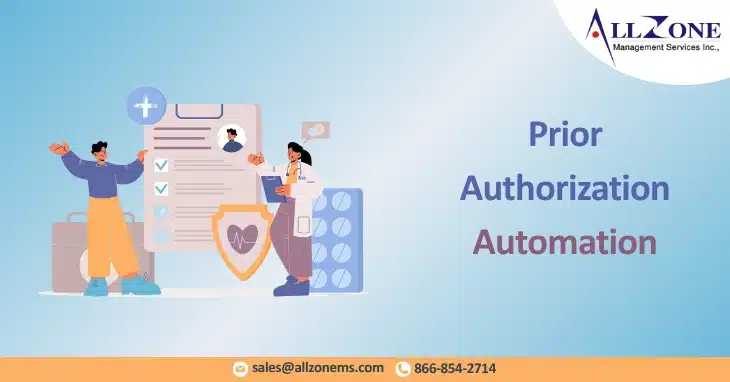In today’s healthcare ecosystem, prior authorization (PA) remains one of the most burdensome administrative processes, creating delays, denials, and dissatisfaction among providers and patients alike. Originally designed to ensure appropriate care and control costs, the process has become a major pain point due to its manual, repetitive, and inconsistent nature. But with the rise of automation and AI technologies, the industry is now exploring new solutions to streamline prior authorizations and reduce inefficiencies.
The Growing Burden of Prior Authorization
Prior authorization requires healthcare providers to obtain approval from a patient’s health insurance company before delivering certain treatments, procedures, or medications. While intended to control costs and prevent unnecessary care, the process often leads to:
- Administrative overload
- Delayed patient care
- High denial rates
- Provider burnout
- Revenue cycle disruption
According to an AMA survey, 94% of physicians report care delays due to prior authorization, and 30% say the process has led to a serious adverse event for a patient.
Why the Current Prior Authorization System Fails
Traditional prior authorization systems are plagued by:
- Manual workflows: Fax machines, phone calls, and paper forms are still widely used.
- Lack of standardization: Payers each have their own criteria, forms, and timelines.
- Limited data transparency: Providers often lack access to the required clinical criteria or reasons for denial.
- Resource constraints: Medical staff spend hours per week completing and following up on prior auth requests.
These issues drain resources and can cause delayed treatments, particularly for patients requiring urgent medications or procedures. This is where prior authorization automation can offer a transformative solution.
The Role of Automation in Prior Authorization
What is Prior Authorization Automation?
Prior authorization automation refers to the use of digital tools, artificial intelligence (AI), and real-time data exchange to streamline the PA process between providers and payers. These systems reduce manual input, eliminate repetitive tasks, and support faster decision-making by leveraging:
- Electronic health record (EHR) integration
- Natural language processing (NLP)
- Machine learning (ML) algorithms
- Real-time data exchange (FHIR, EDI standards)
- Rule-based decision trees
Benefits of Automating the Prior Authorization Process
1. Faster Turnaround Times
Automation enables real-time or near-real-time approvals by instantly validating patient eligibility and cross-referencing payer policies, significantly reducing wait times for patients.
2. Reduced Administrative Burden
Automated systems extract and pre-fill necessary data from EHRs, reducing manual effort and allowing staff to focus on more meaningful tasks like patient care coordination.
3. Lower Denial Rates
With accurate data extraction and validation, the likelihood of missing information or submitting incorrect requests decreases, minimizing claim denials and appeals.
4. Improved Patient Satisfaction
Faster approvals mean patients get timely access to care, resulting in better health outcomes and improved patient trust in providers and payers.
5. Increased Provider Productivity
Clinicians and RCM teams can save significant time by reducing back-and-forth communications and rework, which directly enhances practice efficiency and revenue.
Use Cases and Real-World Applications
Many leading health systems and RCM vendors have already started implementing AI-powered prior authorization platforms that integrate directly with EHRs and payer systems.
For example:
- Cleveland Clinic has adopted automated solutions that reduced their PA response times from several days to minutes.
- UnitedHealthcare and Humana now support real-time PA tools that use APIs for faster decision-making.
Moreover, platforms like Availity, Cohere Health, and Olive AI have introduced automated workflows that support both providers and payers in pre-service authorization and clinical documentation.
Challenges to Automation Adoption
Despite the promising results, automation in prior authorization still faces hurdles:
- Integration Issues
Many healthcare systems use legacy EHRs or fragmented billing platforms that don’t easily support modern APIs or AI-based tools.
- Payer Variability
Since every payer has different criteria, formats, and policies, developing a universal automated solution remains challenging.
- Cost of Implementation
Smaller clinics and independent physicians may find it difficult to afford or implement enterprise-level automation systems.
- Lack of Standardization
There is no universally accepted standard across the industry for automating prior auth, although efforts like HL7’s FHIR and CMS’s interoperability mandates are working toward it.
The Future: A Unified, Real-Time PA Ecosystem
For prior authorization automation to reach its full potential, stakeholders must collaborate on:
- Industry-wide data standards for real-time communication
- Incentives for automation adoption among small practices
- Transparency between payers and providers
- Regulatory support for digital health innovation
CMS has already proposed rules that encourage the use of standardized APIs for automating PA. If widely adopted, these policies could accelerate the shift toward real-time, AI-driven authorizations.
Conclusion: Can Automation Solve the Prior Authorization Problem?
Yes—and it already is. Automation has the potential to radically improve the prior authorization process by reducing administrative waste, accelerating care delivery, and improving patient outcomes. While challenges remain in implementation and standardization, the momentum toward automated prior auth is undeniable.
Healthcare organizations that embrace automation early stand to benefit the most—by not only streamlining their revenue cycle but also enhancing the overall quality of care.

